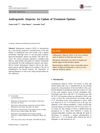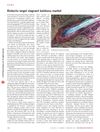What new hair-loss treatments actually look exciting right now (Oct 2025) Research/Science 10/3/2025
New hair loss treatments include Breezula, PP405, ET-02, KX-826, GT20029, VDPHL01, and CosmeRNA, with some showing promise in reactivating stem cells and reversing greying. Breezula and VDPHL01 are highlighted as potential add-ons or alternatives to current treatments like finasteride and minoxidil.
View this post in the Community →
Similar Community Posts Join
5 / 269 resultscommunity When could we expect pp405 to hit the market?
PP405 is expected to finish Phase 2 trials in late 2025, with potential market availability around 2028-2029 if all goes well. Current treatments like finasteride and minoxidil are still popular, while new options like KX-826 and Breezula are anticipated soon.
community Status update on upcoming treatments
Current treatments like finasteride, minoxidil, and derma rolling are considered the best for hair loss, while new treatments such as GT20029, PP405, and others are in various trial phases with results expected in the coming years. There is cautious optimism about the affordability and effectiveness of these upcoming treatments.
community Update July 2025] Most Promising Hair Loss Treatments in Clinical Trials
Promising hair loss treatments in clinical trials include Pyrilutamide, GT20029, CB-03-01, and PP405, with potential market releases between 2027 and 2029. Hair cloning remains experimental and expensive, while existing treatments like finasteride, minoxidil, and microneedling continue to be used.
community Target Area Hair Count (TAHC) increase comparasion of all future treatments in clinical trial phases
Finasteride, Minoxidil, Bioneer CosmeRNA, Technoderma, Kintor, Hope, Breezula, and Follicum treatments showed increases in hair count, with Technoderma showing the highest increase at 24.3 hairs/cm². Amplifica has not yet published results.
community What to look Forward to in 2025
Hair loss treatments are advancing, with Coegin Pharma's FOL005 expected this year and Breezula potentially later. Pyrilutamide is available but not very effective, while Kintor's products face skepticism; traditional treatments like finasteride and minoxidil remain dominant.
Related Research
6 / 14 results
research Recent Advances in Drug Development for Hair Loss
New treatments for hair loss show promise with advanced therapies and better targeting.

research Androgenetic Alopecia: An Update Of Treatment Options
Minoxidil is the only FDA-approved topical drug for treating male or female pattern hair loss, and other medications like finasteride and dutasteride can also increase hair growth.

research New Drugs Under Investigation for the Treatment of Alopecias
New treatments for hair loss show promise, but more research is needed to confirm their safety and effectiveness.

research Androgenetic Alopecia: Combing the Hair Follicle Signaling Pathways for New Therapeutic Targets and More Effective Treatment Options
New treatments for hair loss may target specific pathways and generate new hair follicles.

research Experimental and Early Investigational Drugs for Androgenetic Alopecia
New hair loss treatments may include topical medications, injections, and improved transplant methods.

research Biotechs Target Stagnant Baldness Market
New drug shows promise for better hair growth in baldness treatment.